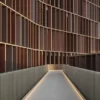The best discounts this week
Every week you can find the best discounts here.
Stop Noise Leaks: Pro Acoustics’ Guide to Airtight Soundproofing
Introduction: Sealing the Sound Leaks for Superior Acoustic Performance
Achieving truly effective soundproofing isn’t just about choosing the right materials; it’s about meticulous attention to detail, especially when it comes to eliminating noise leaks. This guide, from Pro Acoustics, dives deep into the critical aspects of airtight soundproofing, helping you build spaces that are genuinely quiet and free from unwanted noise intrusion. We’ll explore common leak points, effective sealing techniques, and the materials best suited for creating an impenetrable barrier against sound.
Identifying Noise Leaks: The Silent Saboteurs of Soundproofing
Before you begin any soundproofing project, meticulous identification of potential noise leaks is paramount. Many seemingly insignificant gaps can significantly compromise your soundproofing efforts. Common culprits include:
- Electrical Outlets and Switches: These often present pathways for sound transmission.
- Door and Window Frames: Gaps around frames are notorious for allowing sound to penetrate.
- Plumbing and Ductwork Penetrations: Pipes and ducts offer direct routes for noise to travel.
- Wall and Ceiling Joints: Imperfect sealing at these junctions creates vulnerabilities.
- HVAC Systems: Air leaks in HVAC systems can transmit noise and reduce overall soundproofing effectiveness.
Careful inspection, using a flashlight and potentially a sound meter, can reveal these often-overlooked weak points.
Airtight Soundproofing Techniques: A Step-by-Step Guide
Once potential leaks are identified, addressing them requires precision and the right materials. Here’s a breakdown of effective sealing techniques:
- Caulking and Sealants: Acoustic-grade caulk and sealants are crucial for filling small gaps and cracks around window and door frames, electrical outlets, and other penetrations. Choose a sealant with high elasticity and excellent sound-dampening properties.
- Weatherstripping: Employ weatherstripping around doors and windows to create an airtight seal. Consider using foam or rubber weatherstripping designed specifically for acoustic applications.
- Resilient Channels: For walls and ceilings, resilient channels decouple the drywall from the studs, reducing sound transmission. This creates a more effective barrier even with existing gaps.
- Acoustic Gasket Tape: This specialized tape provides an excellent seal around pipes, ducts, and other penetrations, effectively preventing sound transmission through these pathways.
- Green Glue Damping Compound: Using Green Glue between layers of drywall further enhances sound isolation by damping vibrations.
Remember, proper preparation is key. Clean all surfaces thoroughly before applying sealants or weatherstripping to ensure optimal adhesion.
Choosing the Right Materials: The Foundation of Airtight Soundproofing
The effectiveness of your soundproofing hinges significantly on the quality of materials you use. Don’t compromise on quality; invest in products specifically designed for acoustic performance. Look for materials with high Sound Transmission Class (STC) ratings.
Conclusion: The Path to Silent Serenity
Creating truly airtight soundproofing requires a methodical approach, combining careful leak identification with the precise application of high-quality materials and techniques. By following the steps outlined in this guide, you can significantly enhance the sound insulation of your space, creating a quieter, more peaceful environment. Contact Pro Acoustics for expert consultation and support in your soundproofing projects. Let us help you achieve the silence you deserve.





